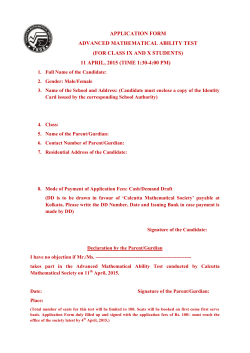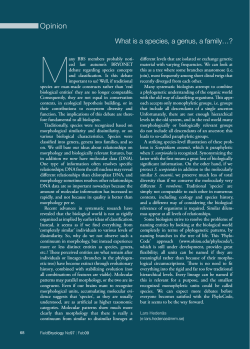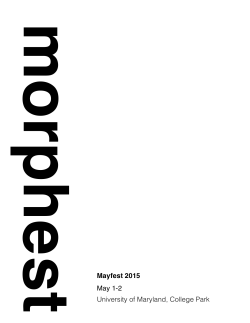
Mathematical Morphology and its applications in Image Processing
Department of Electronics & Communication Engineering National Institute of Technology Karnataka, Surathkal, Mangalore 575025 INDIA & Centre d'Imagerie BioMédicale (CIBM) Genève, Switzerland TEQIP II sponsored Short Course on Mathematical Morphology and its applications in Image Processing July 14 – 25, 2015 Objective Resource person The objective of the course is to provide valuable inputs on advanced techniques in image processing to students and young researchers. In image analysis, it is important to be able to extract features, describe shapes and recognize patterns. Such tasks refer to geometrical concepts such as size, shape, and orientation. Mathematical morphology uses concepts from set theory, geometry and topology to analyse geometrical structures in an image. Linear Image Processing Historically, image processing is based on signal theory and, is basically linear. The heritage from linear systems is mathematical tools like convolution, correlation and Fourier analysis. Because of the linearity of operators, the undo operation is always possible, for example, deconvolution. Recent discoveries in neurology have shown that an image is not interpreted in our brain as a bunch of pixels but rather as a set of objects. These objects are characterized by external boundaries and inner textures. The problem associated with linear operation, such the convolution is the blurring effect, a consequence of the weighted sum of pixels, which tend to destroy the sharpness of edges. Object based image processing An object is defined as a connected set of pixels being either brighter or darker than their surroundings. To detect such objects, many algorithms are available. Most of them belong to a framework called Mathematical Morphology, invented in 1964 by two French scientists, Georges Matheron and Jean Serra from the Ecole des Mines de Paris who worked on the automatic analysis of images occurring in mineralogy and petrography. The word morphology stems from the Greek words morfh and logos, meaning the study of forms. In the context of image processing it is a specific methodology designed for the analysis of the geometrical structure in an image by probing it with small patterns, called structuring elements, of varying size and shape and finds application in medical diagnostics, histology, industrial inspection, computer vision, and character recognition. Course Outline Types of images; Discrete geometry; Transforms; Erosion, Dilation, rank filtering; Opening, Closing; Hit or Miss transform; Connected operations; Granulometry; Morphological filtering; Segmentation Structure of the course Theory and simulation are interleaved during the lectures. Practical work is based on Matlab and on the additional toolbox which can be found at: http://www.mmorph.com Prof. Michel Kocher is currently Professor of Signal and Image Processing at the University of Applied Science HEIG-VD, Yverdon, Switzerland and an affiliated Professor of Centre for Biomedical Imaging (CIBM), University Hospital of Geneva. He received his MSc in Electrical Engineering in 1979 and PhD in Signal processing in 1983 from EPFL Lausanne, Switzerland. He has also worked at ATT Bell Labs, CERAC research institute, Charmilles Technologies and University of Applied Science HEPIA Geneva. His research interests are in Signal and Image Processing, Biomedical image analysis and mathematical modelling. Participants Interested students, researchers and faculty of NITK Surathkal with knowledge of basics of Signal & Image processing can participate in the course. Participants are expected to attend all the lectures and the practical sessions. Interested participants may register by submitting the completed registration form to the Course Coordinator on or before July 03, 2015. The maximum number of participants would be limited to 40. Registration is free. In case you need any additional information please send an email to the Coordinator. Prof. Sumam David S. Email: sumam@nitk.edu.in Phone: 3502 (O) Department of Electronics & Communication Engineering National Institute of Technology Karnataka, Surathkal, Mangalore 575025 INDIA TEQIP II sponsored Short Course on Mathematical Morphology and its applications in Image Processing July 14 – 25, 2015 Registration Form Name: Program: BTech/ MTech/ MTech(R)/ PhD/ Faculty Specialisation: Roll No (for students): Department: Email address: Contact phone number: Signature: Recommendation of Faculty Advisor/ Research Guide (for students) Approval of Head of the Department
© Copyright 2025





















